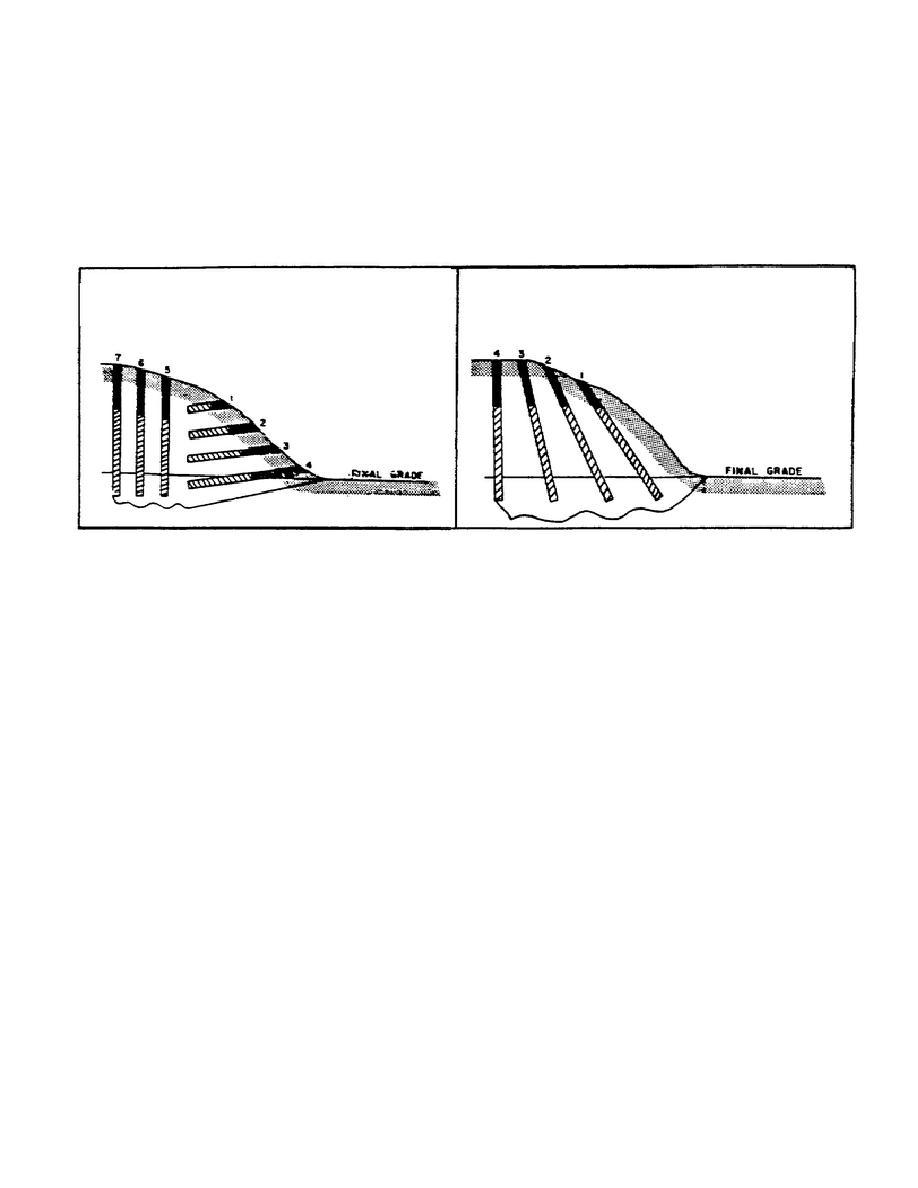
Lesson 2/Learning Event 7
Toe Cuts. Unless the rock in a hillside or terrain quarry has a vertical face, you will have to remove a
toe of rock to begin quarrying. This will require the use of different types of holes, shown in Figures 7
and 8. The method shown in Figure 7 usually gives better control over rock fragmentation and
displacement and is preferred. However, the method shown in Figure 8 involves fewer setups. All
vertical, steeply-inclined, and lifter holes should be subdrilled from 1 to 3 feet (0.3 to 0.9 meters) below
the final grade to assure that the rock between holes will be broken to the desired grade line.
FIGURE 8.
ESTABLISHING
A
FIGURE 7.
TOE
REMOVAL
BY
VERTICAL FACE USING
HORIZONTAL
AND
INCLINED AND VERTICAL
VERTICAL BLASTHOLES
BLASTHOLES.
Ramp Cuts. Figure 9 shows a suggested pattern for excavating a ramp down into a subsurface quarry.
A vertical face is established in the first blast. Use of this method will allow the easiest possible loading
of blasted rock. An alternate method is to establish a vertical face near the low end of the ramp using a
V-cut or pyramid cut. Blasting may then proceed simultaneously up and down the ramp. The blasts at
the lower end after the first V- or pyramid cut will normally be directed into the broken rock produced
by previous blasts. Another method is to use a standard, full-depth vertical or steeply-inclined blast
pattern to fragment the rock under the planned ramp to the level of the quarry floor. A power shovel or
dozer may then construct its own ramp down into the pit. This allows for continuity in drilling and
blasting operations. The resulting ramp car also be removed easily, should this be desired.
44



 Previous Page
Previous Page
